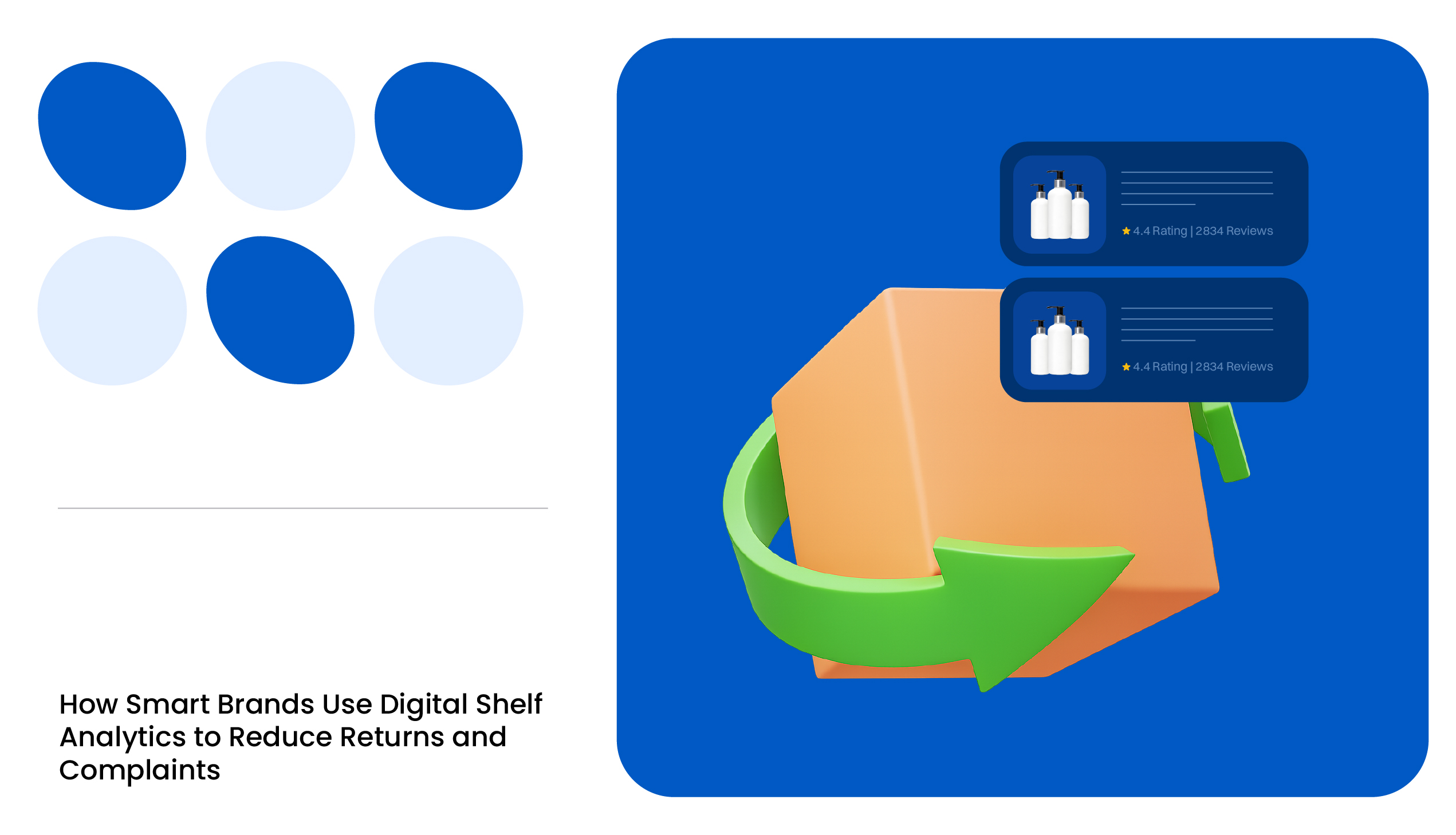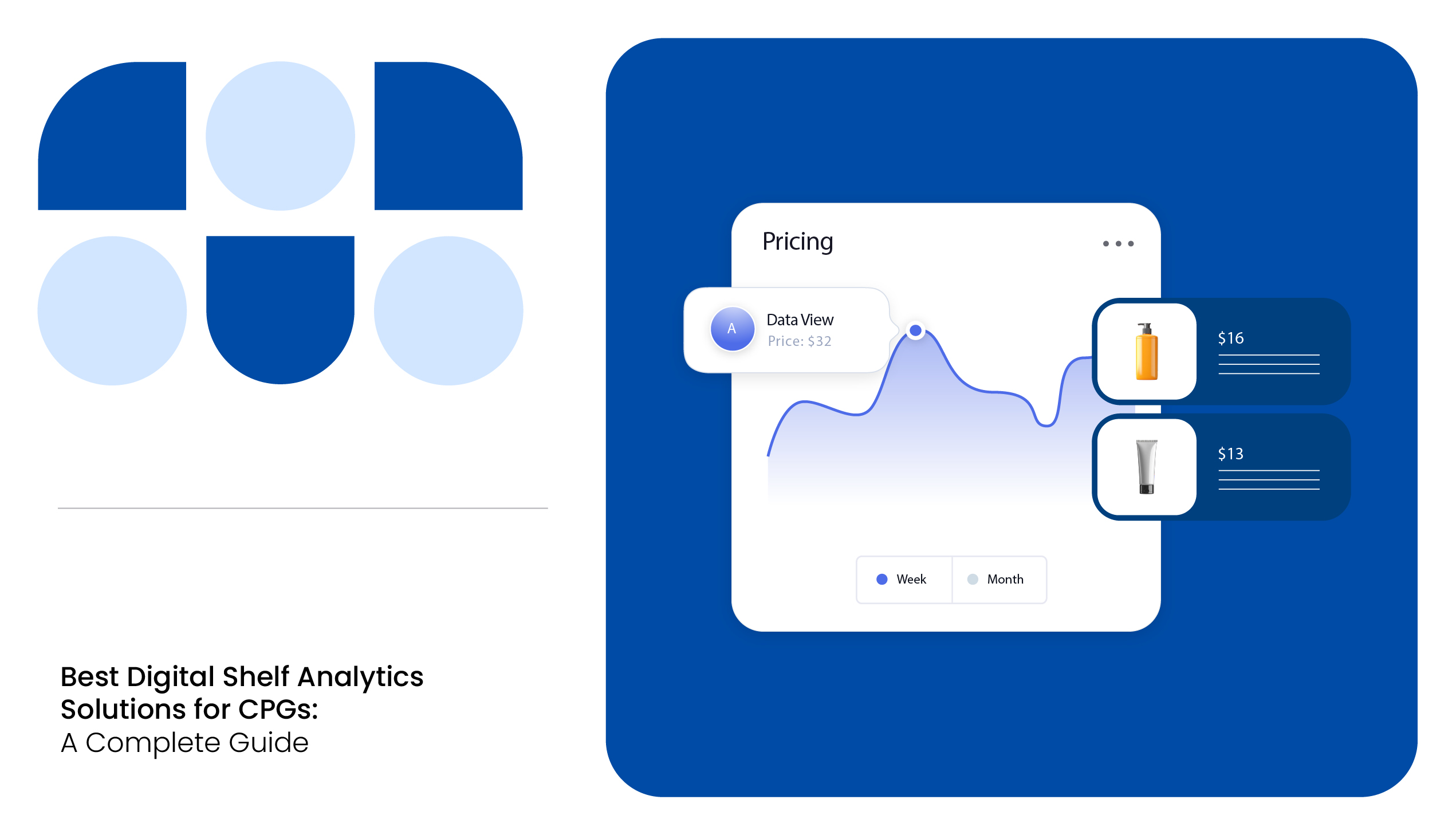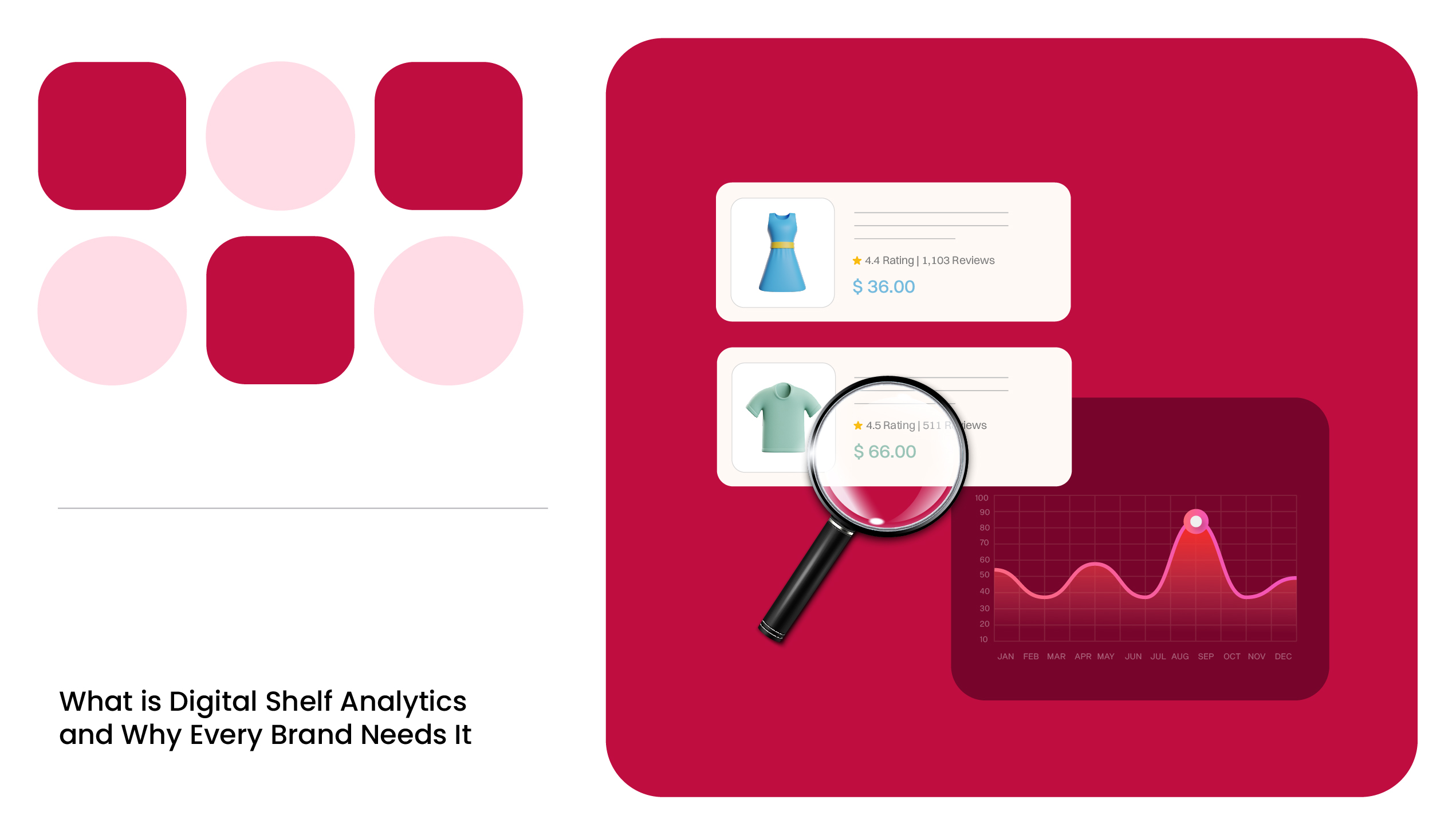If you’ve been trying to figure out how to dominate the digital shelf, you’re in the right place.
Amazon A10 algorithm controls multiple e-commerce parameters, including the visibility of your product listing. The better you understand it, the more likely your products are to appear at the top of Amazon search results.
Whether you’re a brand manager, a new Amazon seller, or a seasoned e-commerce veteran, analyzing consumer behavior on Amazon and optimizing product listings for Amazon A10 is crucial to winning in today’s competitive marketplace.
In this blog, we’re breaking down everything you need to know about the Amazon search algorithm update. You’ll learn what makes it different, how it’s changing the game for sellers, and, most importantly, how you can use it to boost your rankings and sales.
Identifying the best digital shelf analytics vendor for your brand is one of the most important things that decide the future of your business on Amazon. The right choice will help you track your brand performance using advanced analytics and digital commerce metrics.
READ MORE | Interested to know about Amazon’s A9 algorithm? Check out our blog, Ultimate Guide to Amazon A9 Algorithm: A Brand Perspective.
Understanding Amazon A10 Algorithm
Amazon’s A10 algorithm is a significant upgrade from its predecessor, Amazon’s A9 algorithm, focusing on multiple Amazon seller metrics and, in turn, creating a more customer-centric shopping experience.
The algorithm prioritizes relevance, user engagement, and customer satisfaction, ensuring that shoppers find precisely what they’re looking for.
Following are some key features of the Amazon A10 algorithm:
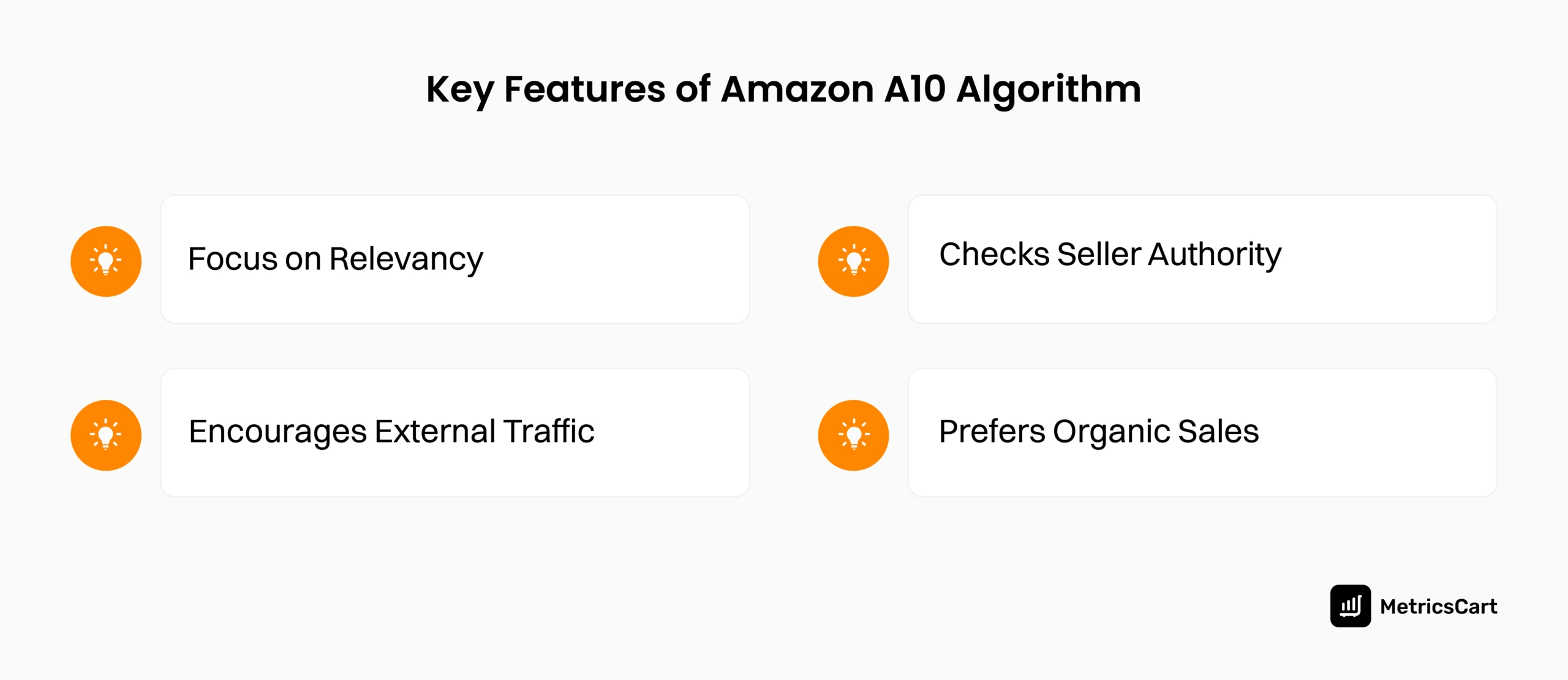
Relevance Takes the Lead
A10’s primary goal is to match customer search intent with the most relevant product listings. It analyzes keywords, product descriptions, and other listing elements to ensure the results align perfectly with what shoppers want.
External Traffic Matters
Unlike earlier versions, A10 values traffic from external sources like social media, blogs, and influencer campaigns. Bringing in off-Amazon traffic signals strong demand for your product, boosting its rankings.
Seller Authority
Seller metrics, such as feedback ratings, fulfillment efficiency, and return handling, play a significant role in determining rankings. Established, trustworthy sellers are rewarded with better visibility.
Customer Engagement
A10 considers factors like click-through rates, time spent on product pages, and customer reviews. Listings that actively engage shoppers are more likely to climb the rankings.
Organic Sales Over Ads
While paid ads still have their place, A10 emphasizes organic sales and authentic customer interactions. It’s no longer enough to rely solely on Amazon’s PPC campaigns to boost rankings.

Strategies To Conquer Amazon A10 Algorithm
Now that you know how the A10 algorithm works, let’s dive into strategies to optimize your digital shelf and increase your Amazon product visibility.
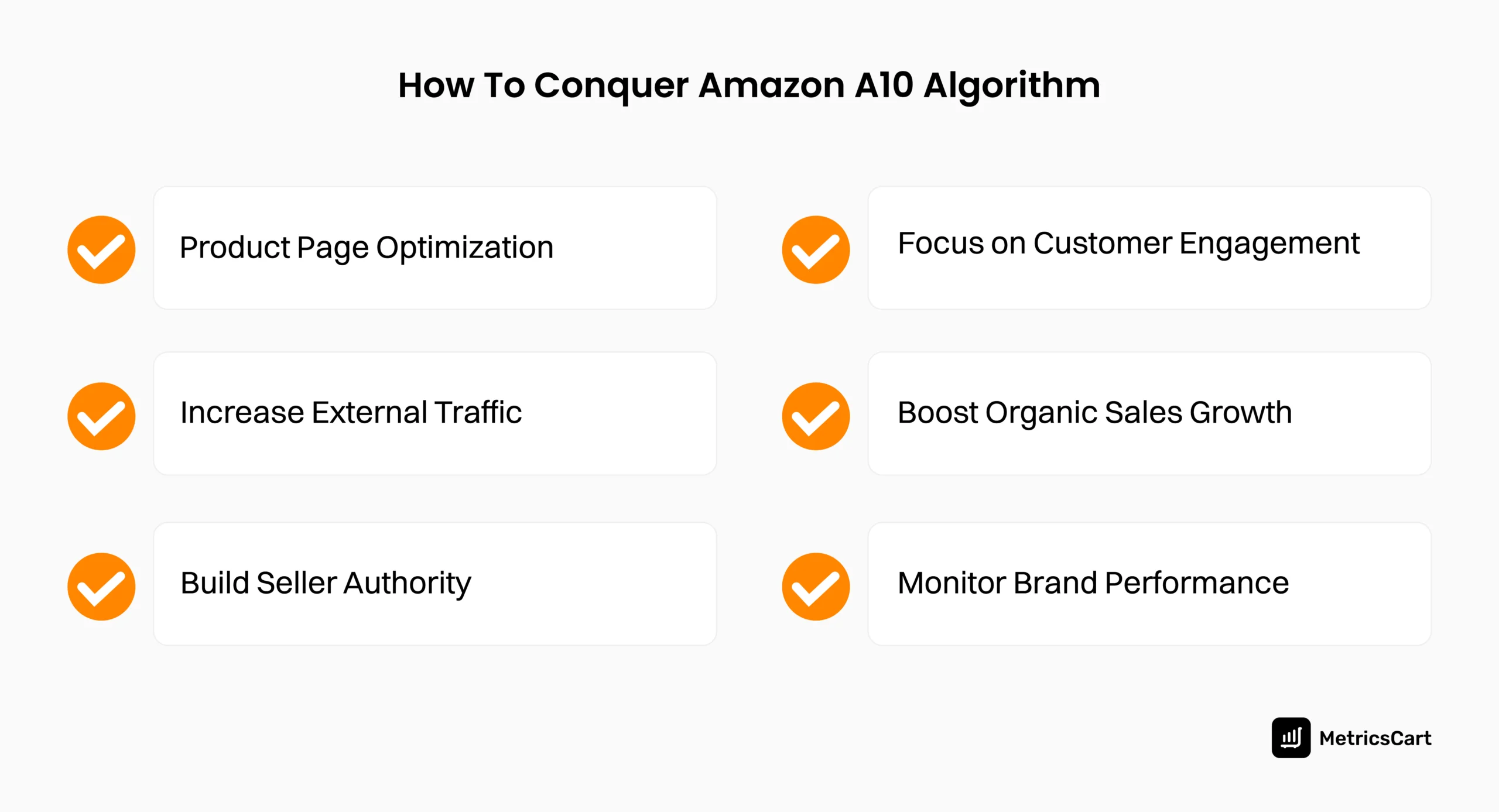
Optimize Product Listings for Relevance
Your product listing is your first impression on consumers, and this can cost you your Amazon Buy Box if it is not done with care. Conduct deep keyword research and add high-performing keywords to your product titles, bullet points, and backend search terms.
Also, product page optimization uses compelling descriptions that highlight key features and benefits in a way that resonates with your target audience.
Ensure your product images are clear and professional and showcase all angles. Enhanced images improve click-through rates and keep shoppers engaged.
Drive External Traffic
A10 rewards products that attract off-platform traffic. By sharing your Amazon listings on platforms like Instagram, Facebook, and Pinterest, you can drive external traffic to the Amazon environment.
Most brands today partner with niche influencers to create authentic product endorsements that direct their audience to your listings.
A well-planned Amazon product launch strategy can also consist of creating blog posts or videos about your product and including links to your Amazon page. External backlinks are a valuable ranking factor for the Amazon A10 algorithm.
Build Seller Authority
In order to rank high in the Amazon search algorithm, it is necessary to establish trust with your customers. By maintaining high feedback scores and providing exceptional service to earn positive reviews.
Brands should monitor and address any negative feedback promptly in order to create a credible seller authority on Amazon. Make sure all of your products are backed by Fulfillment by Amazon (FBA) to ensure fast and reliable shipping, which can further improve your seller rating.
Lastly, ensure accurate product descriptions and quality control to reduce the likelihood of returns.
Enhance Customer Engagement
Product listings that captivate shoppers are more likely to rank higher on the Amazon search algorithm. As a new or seasoned brand, getting more reviews on Amazon can help your brand value and credibility. Positive reviews not only improve rankings but also boost conversions.

In the second episode of the Digital Shelf Insider podcast, Jennifer talks in detail about the importance of personalization and how it can impact the shopping behavior of consumers. You can listen to the full episode at:
Also, responding to negative Amazon reviews and addressing concerns helps build trust and loyalty. Analyze metrics like click-through rates and bounce rates to refine your listings.
This way, you can offer products according to consumer preferences and increase seller authority on Amazon.
Focus on Organic Sales Growth
Organic sales are a strong indicator of product demand on any e-commerce retailer platform. Offer discounts or Amazon virtual bundle deals to encourage purchases without relying solely on paid ads.
You can suggest complementary products like the “frequently bought together” section on Amazon to increase order value and boost organic sales.
Amazon badges are also a great way to scale organic growth on Amazon, as these would attract more customers to check out your brand and the products offered.
Monitor Performance Metrics Regularly
Data-driven decisions are key to success. Third-party digital shelf analytics software like MetricsCart can help you track ranking trends, keyword performance, and customer behavior through review monitoring.
As an Amazon seller, you should stay updated on Amazon SEO and algorithm tweaks and adjust your strategies accordingly.
READ MORE | Want to boost your organic product rankings on Amazon? Check out our blog on How to Rank on Amazon: 7 Essential Tips for Organic Success.
Conclusion
Amazon’s A10 algorithm is designed to prioritize relevance, engagement, and seller authority. By focusing on these areas, you can ensure your products rank higher, attract more customers, and dominate the digital shelf.
Whether you’re a brand manager trying to expand your reach or a new seller looking to make a mark, the strategies outlined above will help you navigate the complexities of the A10 algorithm.
Conquer the Amazon Buy Box and Outshine Competitors!
FAQ
A10 places greater emphasis on external traffic, organic sales, and seller authority, whereas A9 focuses more on keyword relevance and paid advertising metrics.
External traffic signals demand and popularity. The A10 algorithm rewards products that attract visitors from sources like social media, blogs, and influencer campaigns.
Yes, the A10 algorithm places more weight on organic sales and customer engagement, though PPC campaigns can still support visibility when used strategically.
Metrics like click-through rates, time spent on product pages, and bounce rates are used to assess engagement. Optimizing content and visuals can help improve these metrics.
Conduct keyword research, use high-quality images, write detailed product descriptions, and align your listings with customer search intent to boost relevance.





